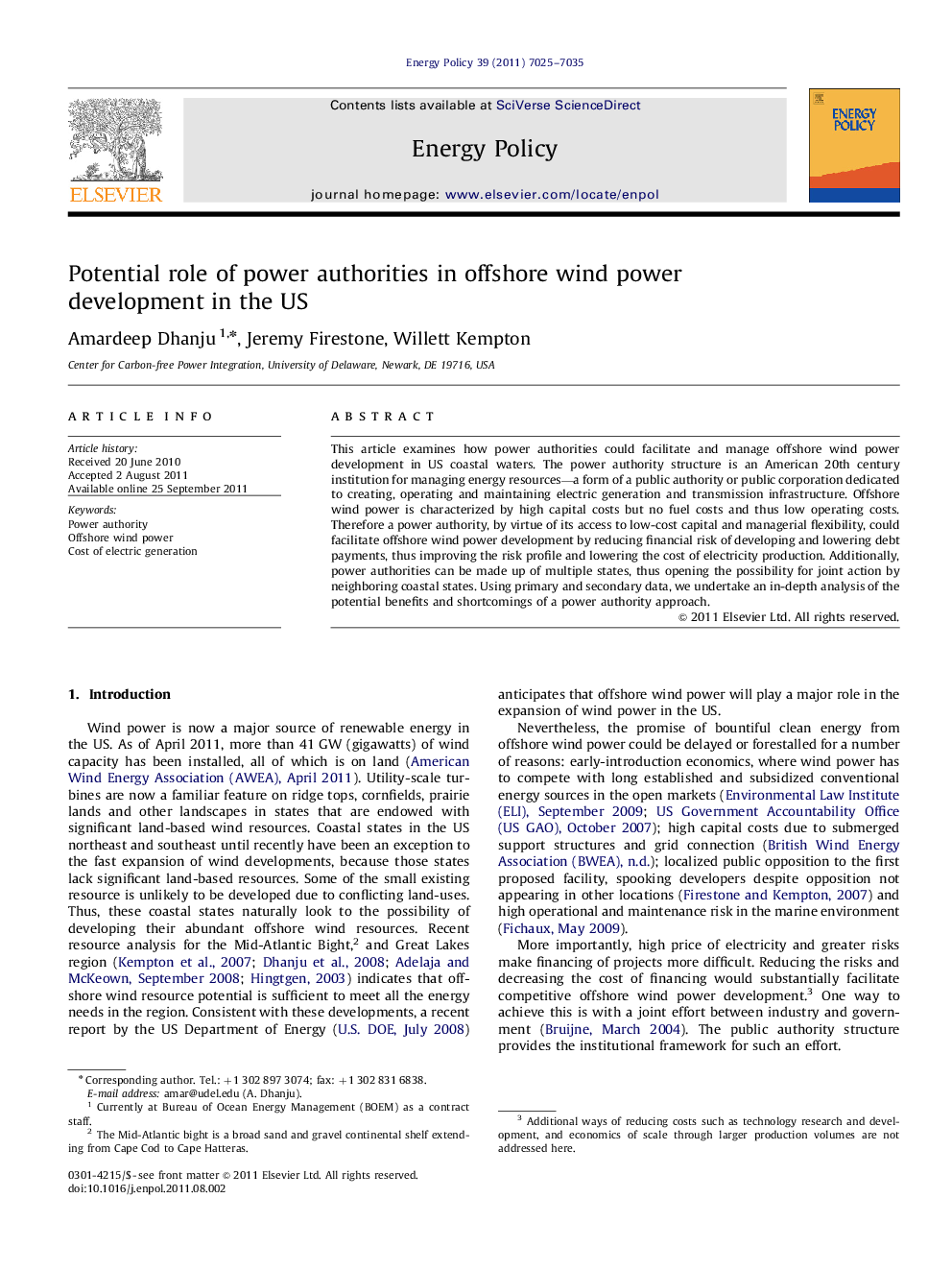| Article ID | Journal | Published Year | Pages | File Type |
|---|---|---|---|---|
| 993374 | Energy Policy | 2011 | 11 Pages |
This article examines how power authorities could facilitate and manage offshore wind power development in US coastal waters. The power authority structure is an American 20th century institution for managing energy resources—a form of a public authority or public corporation dedicated to creating, operating and maintaining electric generation and transmission infrastructure. Offshore wind power is characterized by high capital costs but no fuel costs and thus low operating costs. Therefore a power authority, by virtue of its access to low-cost capital and managerial flexibility, could facilitate offshore wind power development by reducing financial risk of developing and lowering debt payments, thus improving the risk profile and lowering the cost of electricity production. Additionally, power authorities can be made up of multiple states, thus opening the possibility for joint action by neighboring coastal states. Using primary and secondary data, we undertake an in-depth analysis of the potential benefits and shortcomings of a power authority approach.
► Proposes an institutional solution in the form of power authority for offshore wind power. ► Power authority structure can significantly lower the cost of capital. ► Tax-free bond financing available to power authority can significantly reduce the cost of energy. ► It can enhance regional collaboration among coastal states to harness the offshore wind potential.
